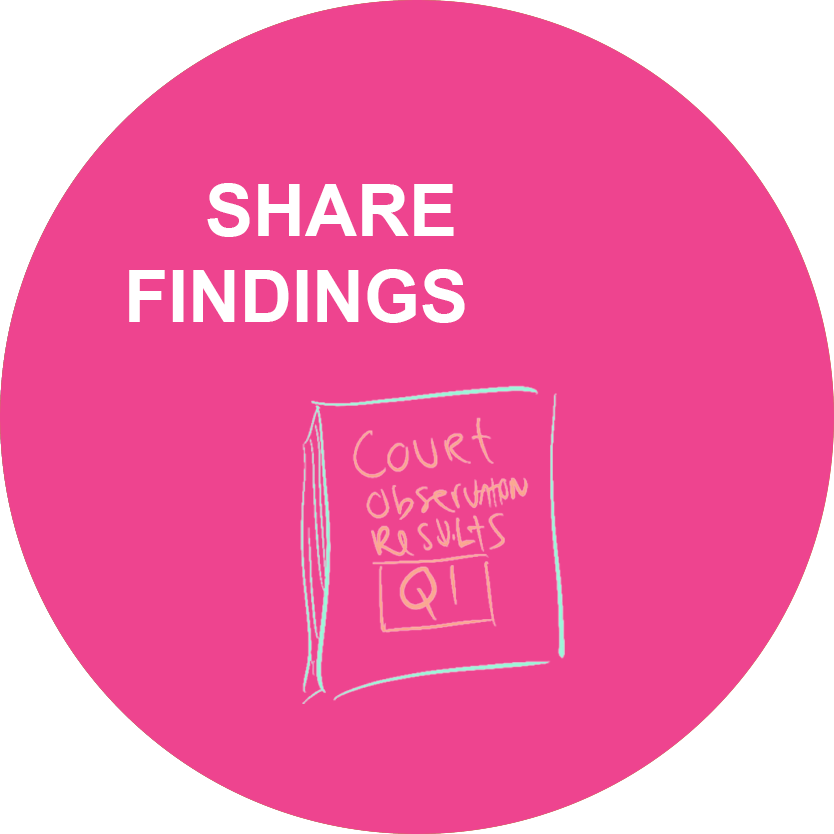Are you interested in starting a court observation group in your area? This page has several resources so that you can get started. Click on the section ‘Guides for Courtwatching‘ to find links to guides or the section ‘Start Your Own CourtWatch‘ for a quick overview on how to set up your own court watch group.
Guides for Courtwatching:
- Links to CourtWatch guides:
Start Your Own CourtWatch:
There are 6 key steps to start your own CourtWatch group:
- Collect Information
- Find your Focus Area
- Observation Protocols
- Community Members
- Community Training
- Sharing your findings
Below you’ll find more information about each of these 6 steps:

- Collect Information:
- First you need to do a bit of research and collect information on whether there are virtual proceedings in your area. You can check our table on the main page to see if there are any virtual proceedings in your jurisdiction.
- Then you need to find out how to access the proceedings. Some courts let you sign up and send you zoom links through their mailinglist, others stream their proceedings on YouTube.
- Note down the tech, the courts are using and how you are able to access it. You should also take a look at the schedule so that you know when court proceedings are streaming.

2. Find your focus area: most court observation groups have a specific area they focus on, whether it’s criminal justice or domestic violence proceedings. Try to find out what’s accessible first in step 1 and then pick a legal issue that you are the most interested in.

3. Observation protocols: you want to try to observe in a systematic manner and highlight discrepancies that you might come across as efficiently as possible.
Use Google Spreadsheets/Docs, Microsoft Word or any other program that’s easily accessible and think about what you are most interested in noting down every time you observe a case. A couple of suggestions:
- Date
- Case number
- Name of judge/prosecutor/attorneys
- Are all the parties (including litigants) present?
- What kind of charges are they facing?
- What was said and decided?
- What was the reaction of the litigant?
- How long did the case take?
There are many more things you could note down in the document. Make sure you create templates of these forms to ensure that all the community members are noting down the same things for each proceeding. If you need inspiration for these forms, then you could take a look at the resources that are uploaded by established court observation groups.

Find community members: we recommended you create an online community where you can exchange ideas and support each other throughout the process. There are various platforms you can use, such as:
- Discord
- Slack
- Microsoft Teams
Whatever you use, make sure it’s free to join for your community members.
Now that you have created a community workspace, invite your community members to join your court observation group. You can spread the word through online social media channels:
- your local Facebook group
- NextDoor
You could also create basic flyers and distribute these in your local community hubs such as coffee shops, community centers, etc.

- Community training: set up onboarding sessions once community members have joined the group.
- Walk them through the process on how to access the recording and the protocol template you created.
- Then schedule in weekly, bi-weekly or monthly (depending on the need of your community) check-in sessions.

- Share findings: periodically synthesize the information and share findings with your local media and community partners.
